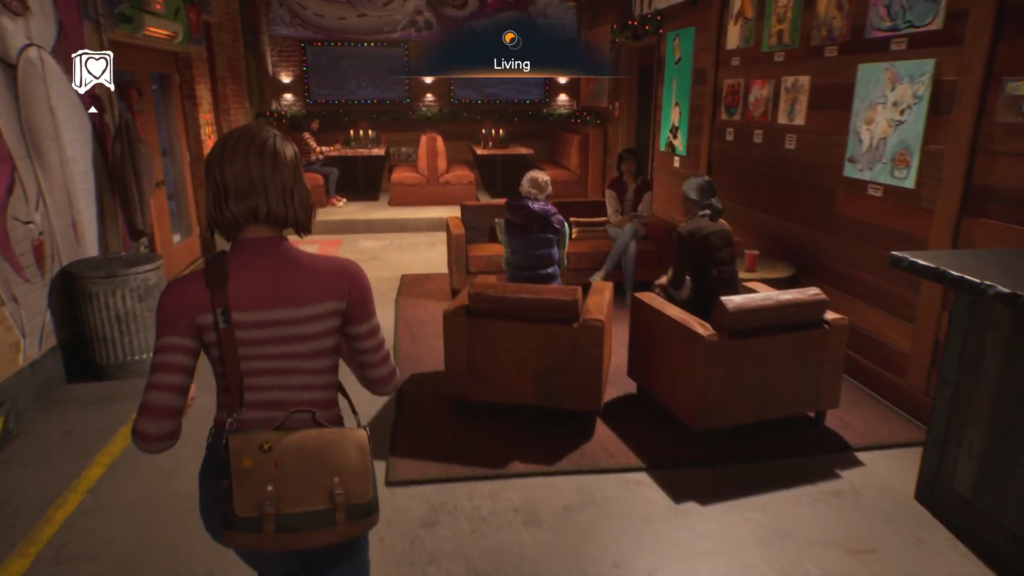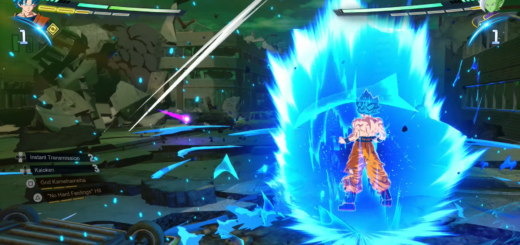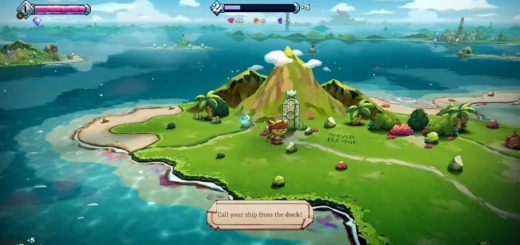Life Is Strange Double Exposure Redeem Code Free Download
You can download life is strange double exposure redeem code for free to download life is strange double exposure on PS5,Xbox Series X/S and PC. All you want to do is follow the tutorial given here to download it easily on any platform. US-based Deck Nine developed the game, and it is published by Square Enix. The game managed to meet the expectations of most gamers, and it has got lots of positive reviews till now.

Tap on the button given above to access the online life is strange double exposure redeem code generator. After opening the online generator, you can see several platforms; choose the appropriate one and download your code. It will take you only a few seconds to claim the code. As you know, you can redeem these codes at any marketplace you desire. For example, if you are a PS5 player, you can redeem the PS5 code at the PlayStation Marketplace.

Life Is Strange Double Exposure Review
The Life is Strange series has always straddled an unusual mix of realism and supernatural intrigue, exploring the everyday alongside the extraordinary. Its protagonists grapple with the surreal forces that affect their lives, yet they’re rooted in familiar struggles—friendships, grief, and self-discovery. The newest installment, Life is Strange: Double Exposure, extends these themes in a campaign that revisits Max Caulfield, the series’ original protagonist, as she navigates her late twenties. The game continues to balance themes of nostalgia and progress, expanding the world without becoming stuck in its past. Although Double Exposure occasionally stumbles, its unique approach remains largely intact, offering an experience both familiar and fresh for long-time fans and newcomers alike.
Double Exposure opens with Max at a new stage of her life: a young professional photographer and artist-in-residence at the picturesque Caledon University. Her life in Arcadia Bay, though pivotal, is now part of her distant past. She’s moved on, but the trauma of her teen years is still evident, surfacing in small details like keeping Chloe’s messages saved on her phone and occasionally scrolling through the photos and memories from that period. This portrayal of Max feels authentic, acknowledging her growth while respecting the influence of her past. Double Exposure cleverly nods to this history without overwhelming the present storyline, opting for subtle callbacks rather than blatant nostalgia.
The game deftly sidesteps moments of indulgent fan service—there are no dramatic, out-of-place cameos to remind players of the series’ legacy. Instead, it crafts new, grounded relationships. Max’s closest friend at Caledon, Safi, is a fellow artist and confidante. Safi’s friendship provides a warm counterbalance to Max’s somewhat reserved personality, and she quickly becomes a grounding influence in Max’s life at Caledon. Tragically, however, Safi’s untimely murder at the start of the story disrupts this newfound stability and serves as the emotional engine of the game’s central conflict.
With Safi’s death, Max’s time-travel powers return—but with an evolved twist. Rather than simply rewinding time, she now exists between two timelines: one where Safi has died, and another where she lives. This shift introduces an exploration of grief, memory, and parallel lives, embodying the emotional complexity at the heart of the Life is Strange series. In many ways, this mechanic also deepens the gameplay, as players must now navigate two distinct realities, noting small visual cues and atmospheric changes that subtly hint at each world’s unique emotional texture. In the “Living World,” the environment is warm, bathed in sunlight with soft yellows and greens, reflecting a world in which Safi is still part of Max’s life. In the “Dead World,” by contrast, the world is drenched in muted blues and grays, creating a somber, haunted landscape. This visual contrast effectively immerses players, underscoring the weight of Max’s loss.
True to the spirit of Life is Strange, Double Exposure builds upon a familiar blend of supernatural elements with everyday mundanity. The game leans into the series’ signature interactive style: observing objects, making conversation choices, and exploring environments where each object holds a memory or insight into Max’s life. These mechanics return largely unchanged, offering players the opportunity to immerse themselves in Max’s world at Caledon University, her makeshift home. Here, she navigates various social dynamics, from strained friendships to tentative romantic connections, bringing out the nuanced, often messy facets of her character.
Hannah Telle’s return as Max is a highlight, her performance bringing a rich sense of vulnerability and resilience that ties the narrative together. She captures Max’s introspective nature, making even the quieter moments—like picking up an old camera or flipping through her sketchbook—feel emotionally charged. This intimacy in gameplay keeps the stakes personal, making Caledon’s small, intimate settings feel expansive in meaning, if not in size.
Despite these strengths, Double Exposure isn’t without its shortcomings. At times, the game’s dialogue stumbles into clichés and awkwardness. Supporting characters like Safi and Vinh, another of Max’s friends and one of her potential romantic interests, suffer from moments of “cringe” dialogue that can be grating, especially in contrast to Max’s more grounded interactions. Some lines feel out of place, as if trying too hard to sound hip or relatable, which can momentarily pull players out of the otherwise immersive experience. This isn’t entirely new for the series, which has always balanced heartfelt storytelling with slightly awkward, even corny, moments. However, these lines stand out more given the heightened maturity of the storyline.
Technically, Double Exposure delivers the most polished visual experience of the series so far, which might be expected given that it’s the first game in the franchise not developed with PS4 and Xbox One in mind. From facial animations to environment details, Deck Nine has improved the realism and expressiveness of character movements and interactions. The motion capture for characters enhances Telle’s performance, adding nuance to Max’s reactions, and creating an emotional resonance that earlier installments lacked. Yet, despite these advancements, the game struggles with minor technical hiccups that can impact the flow. For instance, texture pop-ins and occasional audio bugs interrupt the immersion. In fact, a particularly widespread audio bug halted progress for many players during pre-release, necessitating workarounds. These issues, though not insurmountable, occasionally detract from the otherwise smooth experience.
As a whole, Double Exposure is more limited in scope compared to previous games in the series, particularly Life is Strange 2, which took players on an expansive road trip across America. In contrast, Max’s journey in Double Exposure remains confined to a few key locations within and around Caledon University. This smaller setting focuses the narrative, allowing for deeper exploration of Max’s relationships and inner struggles, but it may feel somewhat constrained for players hoping for a wider, open-world experience. Invisible walls prevent exploration beyond set boundaries, reinforcing the game’s tighter, more introspective focus. For players invested in Life is Strange for its atmosphere and slower pacing, this narrowed scope will likely feel more intimate, grounding the supernatural in the everyday.
The gameplay also benefits from creative use of the new time-travel mechanic, which Deck Nine carefully integrates into the plot. Shifting between timelines has a tangible effect on gameplay, and though the mechanic isn’t especially demanding, it offers interesting strategic possibilities. In one late-game sequence, Max’s actions across both timelines have a ripple effect, creating a narrative puzzle that evokes the energy of heist scenes from films like Ocean’s Eleven. This balance between realism and fantasy is quintessential Life is Strange, yet Double Exposure doesn’t press the mechanic so hard as to overwhelm the story, keeping the focus on emotional stakes rather than action.
In the end, Life is Strange: Double Exposure finds its place as a heartfelt, if imperfect, continuation of the series. It doesn’t radically change the Life is Strange formula, nor does it try to reinvent the wheel. Instead, it adds a new layer to Max’s story, capturing the same spirit of reflection and resilience that fans have come to expect. Despite a few stumbles, Double Exposure is a strong entry, bringing together enhanced visuals, nuanced performance, and a thoughtful narrative that manages to feel both campy and comforting.
Though the game’s ambitions are modest, it achieves what it sets out to do, creating an experience that’s nostalgic without being indulgent. Double Exposure is for those who have followed Max’s journey and grown with her, inviting players back into a world where the supernatural is just a step removed from the mundane. It may not redefine the genre, but it offers a compelling, quietly powerful story that feels, in all the best ways, like coming home.


